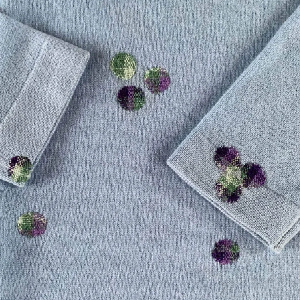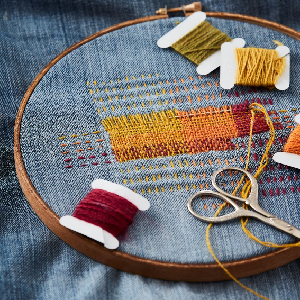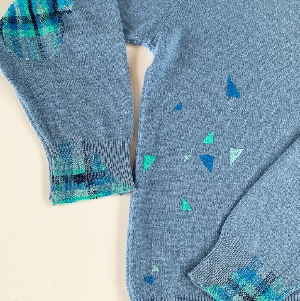 |
 |
 |
 |
 |
 |
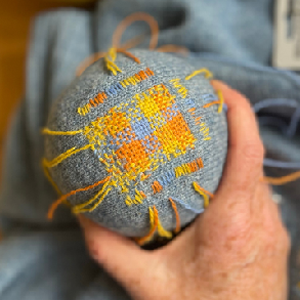
Darning usually just refers to the process of weaving with thread to repair a hole or worn spot. Darning is useful on light fabrics, as well as heavier ones. It can be used or dresses or jeans, but patching is typically better on the thicker and tougher material.
Woven darning is the most common, developed on its own in various parts of the world under different names. It is the simple running of parallel lines across the hole, then vertically running the thread through them, weaving back and forth over the parallel lines. This creates a new fabric within, anchoring itself subtlety in the fabric. This is the most common type and can be used across fabric types from thick jeans to thin shirts, socks, and dresses.
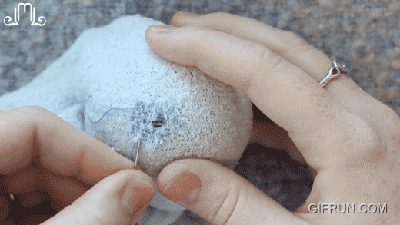
There are different styles of darning, such as swiss darning, honeycomb darning, and scotch darning. Swiss darning is a technique best used for invisible darning, but when using new colors of thread can be visible. This technique creates stitches matching the knit texture and is done within the fabric. This keeps it flat and even. With the right materials, it can be done invisibly.
Scotch darning is not as pretty as swiss darning, but it's a simpler way to fill the holes. It's stronger than typical darning, although it is not as stretchy. Its good for knits, bigger holes, and doesn't turn out flat the way swiss darning does.
Honeycomb darning is a circular method, good for the heels of socks, and has a honeycomb pattern to its shape. Its a fast method that is easy for beginners and is less likely than squares or rectangles to create a bulky feeling. Its important to use the proper thickness of thread as well to prevent bulkiness. If you like circles and honeycomb patterns, this is a good method to learn.

